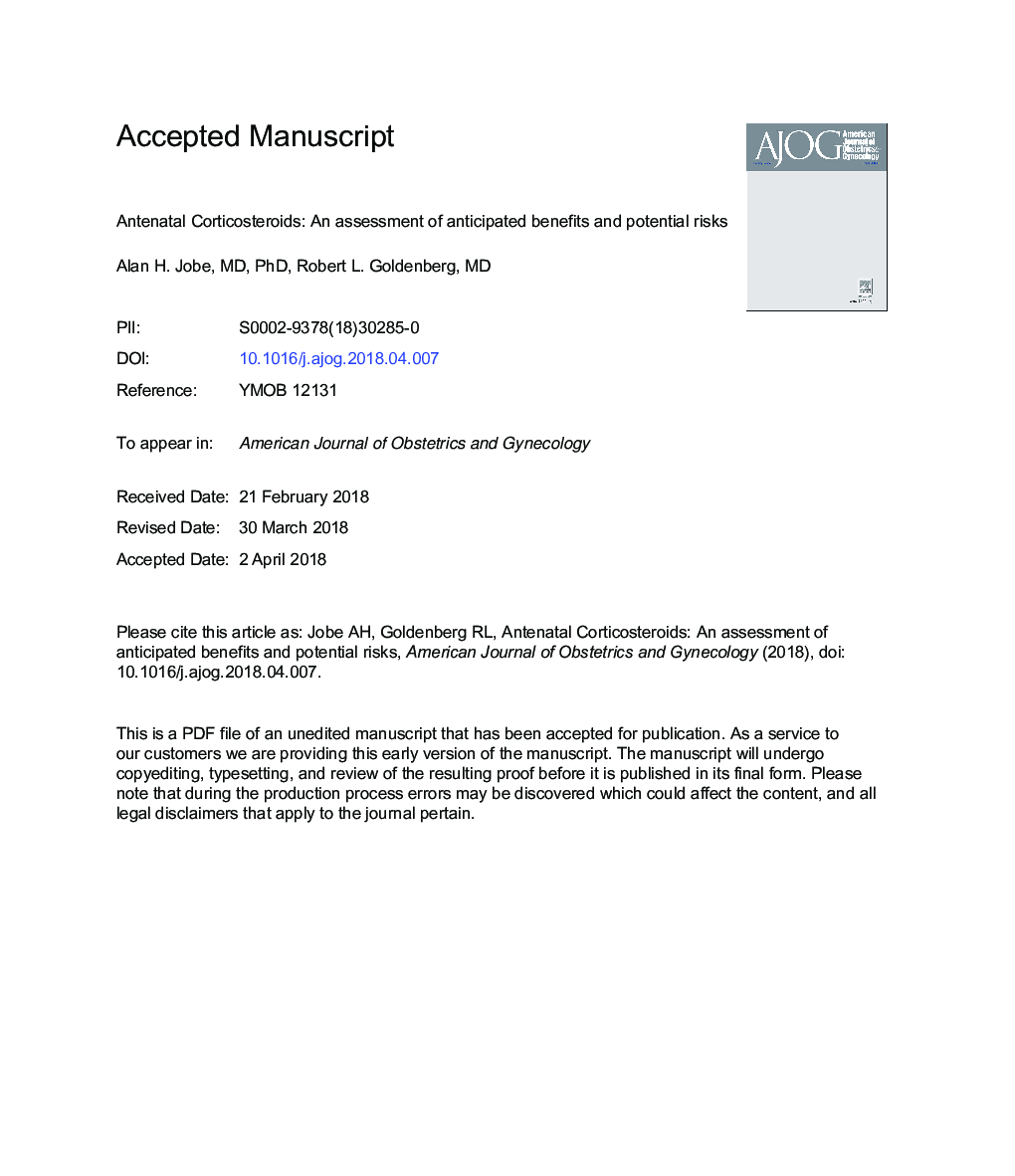| کد مقاله | کد نشریه | سال انتشار | مقاله انگلیسی | نسخه تمام متن |
|---|---|---|---|---|
| 8752407 | 1594859 | 2018 | 44 صفحه PDF | دانلود رایگان |
عنوان انگلیسی مقاله ISI
Antenatal corticosteroids: an assessment of anticipated benefits and potential risks
ترجمه فارسی عنوان
کورتیکواستروئیدهای ناحیه ای: ارزیابی مزایای پیش بینی شده و خطرات بالقوه
دانلود مقاله + سفارش ترجمه
دانلود مقاله ISI انگلیسی
رایگان برای ایرانیان
کلمات کلیدی
کورتیکواستروئیدهای انتینالال، خونریزی داخل وریدی انتروکولیت غدد لنفاوی، مرگ نوزادان، بیماری های نوزادان، توسعه عصبی، زودرس سندرم دیسترس تنفسی،
موضوعات مرتبط
علوم پزشکی و سلامت
پزشکی و دندانپزشکی
پزشکی و دندانپزشکی (عمومی)
چکیده انگلیسی
Antenatal corticosteroids are standard of care for pregnancies at risk of preterm delivery between 24-34 weeks' gestational age. Recent trials demonstrate modest benefits from antenatal corticosteroids for late preterm and elective cesarean deliveries, and antenatal corticosteroids for periviable deliveries should be considered with family discussion. However, many women with threatened preterm deliveries receive antenatal corticosteroids but do not deliver until >34 weeks or at term. The net effect is that a substantial fraction of the delivery population will be exposed to antenatal corticosteroids. There are gaps in accurate assessments of benefits of antenatal corticosteroids because the randomized controlled trials were performed prior to about 1990 in pregnancies generally >28 weeks. The care practices for the mother and infant survival were different than today. The randomized controlled trial data also do not strongly support the optimal interval from antenatal corticosteroid treatment to delivery of 1-7 days. Epidemiology-based studies using large cohorts with >85% of at-risk pregnancies treated with antenatal corticosteroids probably overestimate the benefits of antenatal corticosteroids. Although most of the prematurity-associated mortality is in low-resource environments, the efficacy and safety of antenatal corticosteroids in those environments remain to be evaluated. The short-term benefits of antenatal corticosteroids for high-risk pregnancies in high-resource environments certainly justify antenatal corticosteroids as few risks have been identified over many years. However, cardiovascular and metabolic abnormalities have been identified in large animal models and cohorts of children exposed to antenatal corticosteroids that are consistent with fetal programming for adult diseases. These late effects of antenatal corticosteroids suggest caution for the expanded use of antenatal corticosteroids beyond at-risk pregnancies at 24-34 weeks. A way forward is to develop noninvasive fetal assessments to identify pregnancies across a wider gestational age that could benefit from antenatal corticosteroids.
ناشر
Database: Elsevier - ScienceDirect (ساینس دایرکت)
Journal: American Journal of Obstetrics and Gynecology - Volume 219, Issue 1, July 2018, Pages 62-74
Journal: American Journal of Obstetrics and Gynecology - Volume 219, Issue 1, July 2018, Pages 62-74
نویسندگان
Alan H. MD, PhD, Robert L. MD,
